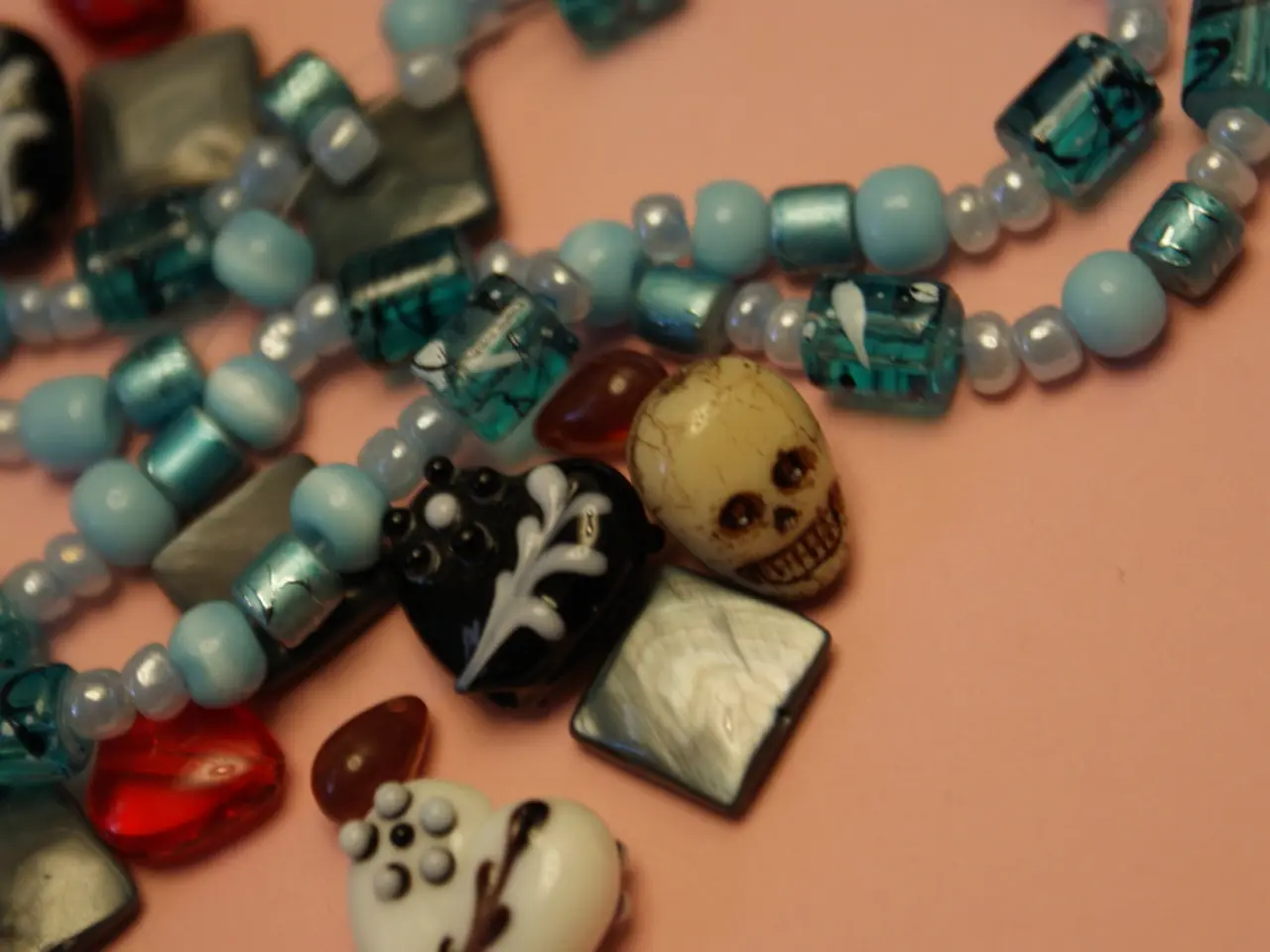Art Deco Jewelry's Indian Influence: An Exploration
In the roaring twenties and thirties, a unique and colourful subgenre of Art Deco jewellery emerged, captivating the world with its lively, multicoloured style. This was the era of Tutti Frutti jewellery, a distinctive creation pioneered by Cartier and influenced by Indian designs, characterised by its vivid gemstone combinations and enduring luxury status.
The story of Tutti Frutti jewellery began in 1911 when Jacques Cartier, enchanted by the colours, particularly of Indian jewels, made his first trip to India. This encounter led to a close relationship with several Maharajas of India, resulting in the creation of two different types of gems: commissions on behalf of the Maharajas to reset their own jewels or loose gems into bespoke creations, and the creation of similar examples for the western market.
The vibrant colours seen in Jaipur enamels inspired the creation of multicoloured Tutti Frutti jewels in the 1930s. The Indian style in Art Deco jewellery was popular during this period, reflecting a fascination with global cultures. The combination of exotic Indian designs and emerging gemstone cuts helped to create what was known at the time as "Hindou" jewels, later renamed "Tutti Frutti" in the 1970s. These jewels were frequently set with carved emeralds, rubies, and sapphires and were made for the western market.
Notable pieces include Cartier’s Mountbatten Bandeau from 1928, an emblematic and high-value example of Indian-inspired Tutti Frutti jewellery that set a standard for luxury and design innovation during the period. Such pieces have sold for over a million dollars at auction, underscoring their historical and artistic significance.
Significant designers beyond Cartier include American jeweler J.E. Caldwell, who adapted the Tutti Frutti motif within Art Deco aesthetics, blending French influences with American elegance and thereby expanding the style’s geographic and creative reach.
In recent years, Tutti Frutti jewellery has continued to captivate collectors and auction-goers. A gem-set, diamond and enamel Tutti Frutti bracelet by Cartier, circa 1930, was sold via online auction by Sotheby’s in 2020 for US $1,340,000. This bracelet, which had never appeared at auction before, caused a stir and far exceeded its estimate of US $800,000.
The modern brilliant-cut for diamonds, first developed in 1919 by Marcel Tolkowsky, played a significant role in the popularity of Tutti Frutti jewellery. Financial constraints played a role in the popularity of these jewels, as they were less expensive than faceted gems.
For those eager to delve deeper into the world of Tutti Frutti jewellery and gemmology, The Gem-A Gem Hub offers opportunities to develop knowledge and understanding of fine jewellery, both historic and contemporary.
References:
[1] The Al Thani Collection and Indian and Mughal Jewellery Pieces Sold by Christie's in 2019 (Gems&Jewellery magazine, Autumn 2019) [2] Tutti Frutti Jewellery: A Colourful Subgenre of Art Deco Jewellery (Gem-A, 2020) [3] The History and Evolution of Tutti Frutti Jewellery (Cartier, 2019) [4] J.E. Caldwell: The American Jeweler who Adapted Tutti Frutti Motifs (Gem-A, 2020) [5] The Legacy of Tutti Frutti Jewellery: Iconic Pieces and their Influence (Sotheby’s, 2020)
- The Tutti Frutti jewelry inspired by Indian designs, particularly popular in the 1930s, emerged as a unique and colorful subgenre of Art Deco jewels, characterized by their vivid gemstone combinations and enduring luxury status.
- In recent years, online learning platforms such as Sotheby’s have sold notable Tutti Frutti jewelry pieces, like a gem-set, diamond, and enamel bracelet by Cartier from 1930 for over $1,340,000.
- For enthusiasts seeking to expand their understanding of Tutti Frutti jewelry and gemmology, organizations like The Gem-A offer various educational opportunities in fields like education and self-development, fashion-and-beauty, and entertainment.
- The modern brilliant-cut for diamonds, first introduced in 1919 by Marcel Tolkowsky, contributed to the popularity of Tutti Frutti jewelry, as it was less expensive than traditional faceted gems. The vibrant colors seen in Jaipur enamels further inspired the creation of multicolored Tutti Frutti jewels.




